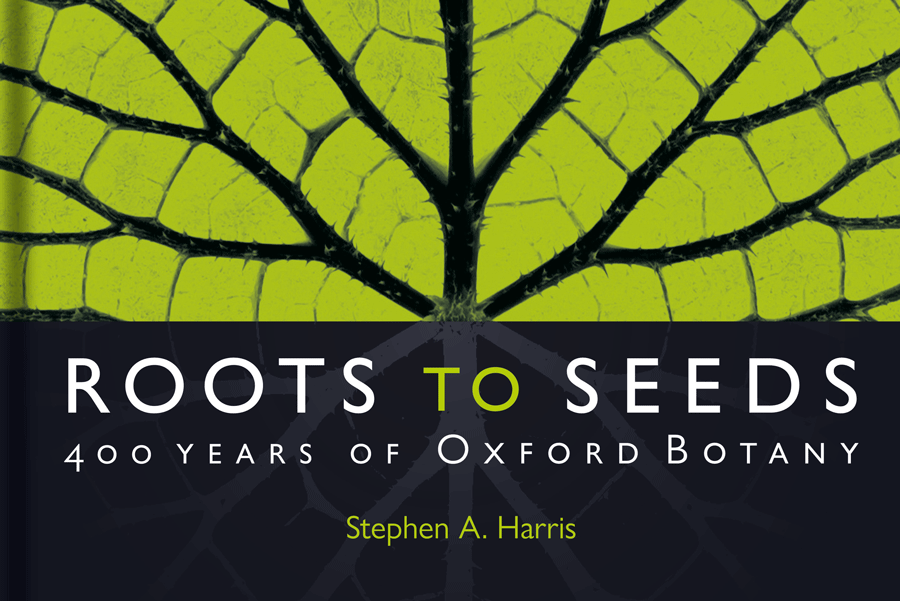Roots to Seeds – 400 years of Oxford Botany
A new book celebrating 400 years of Oxford Botany has been published to coincide with an exhibition of the same name at the Bodleian Libraries. The book profiles the botanists and collections that have helped to change our understanding of the biology of plants over the past four centuries and is a fitting testament to the work of the Oxford Botanic Garden.
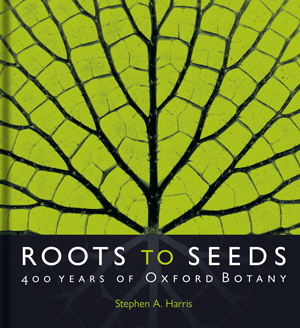 In “Roots to Seeds” Stephen A Harris (Druce Curator of Oxford University Herbaria) focuses on plant classifications, experimental botany, botanical collections, agriculture, forestry and education, in what is a superb and scholarly publication. It charts the origins of botany and the history of Oxford Botanic Garden since its foundation in 1621.
In “Roots to Seeds” Stephen A Harris (Druce Curator of Oxford University Herbaria) focuses on plant classifications, experimental botany, botanical collections, agriculture, forestry and education, in what is a superb and scholarly publication. It charts the origins of botany and the history of Oxford Botanic Garden since its foundation in 1621.
Stephen Harris has assembled an amazing cornucopia of facts and highlights of the Botanic Garden’s fascinating history in a superb publication, lavishly illustrated with botanic specimens, garden plans and fossil slides.
Throughout the book, the author includes pen portraits of former Sherardian Professors, botanists and lecturers at the Botanic Garden taking us up to the present day.
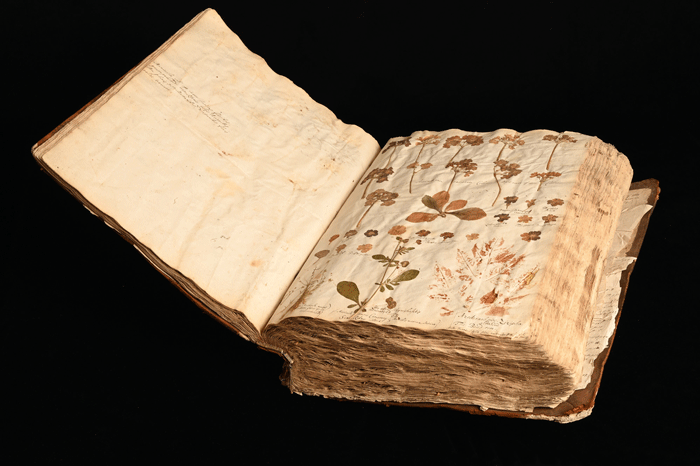 (above: Named cultivars of auricula (Primula auricula) from the book herbrium of Jacob Bobart the Elder, the foundation of the University’s botanical collections.)
(above: Named cultivars of auricula (Primula auricula) from the book herbrium of Jacob Bobart the Elder, the foundation of the University’s botanical collections.)
We meet Bobart the Elder, soldier and publican, who became the first gardener at the Botanic Garden, where he apparently kept a goat, plaited silver coins into his beard and was an important breeder of auriculas. Johann Dillenius, a German botanist, the first Sherardian Professor of Botany and Robert Morrison, appointed in 1669, who produced the world’s first botanical monograph.
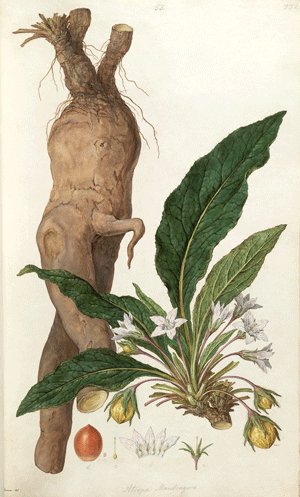 Among this book’s treasurers is a selection of Ferdinand Bauer’s renowned illustrations for Flora Graeca – the lavishly illustrated results of an expedition to the eastern Mediterranean in the 1780s.
Among this book’s treasurers is a selection of Ferdinand Bauer’s renowned illustrations for Flora Graeca – the lavishly illustrated results of an expedition to the eastern Mediterranean in the 1780s.
(pictured left: Water colour of Mandrake (Mandragora officinarum), based on sketches made by Ferdinand Baur during his journey in the easter Mediterranean with John Sibthorp, and comleted in Oxford between 1788 and 1792. Sherardian Library of Plant Taxonomy, Unifersity of Oxford.)
At the front of the book is a useful timeline charting major events at the Botanic Garden from 1621 through to 2015. There is also an excellent notes, reference section and index.
Until 1834, the Oxford Botanic Garden was called the Physick or Physic Garden. After 1963 the term ‘Botanic Garden’ was used and is understood to include the Arboretum.
In the Foreword, the author points out that the exhibition which the book accompanies, explores the diverse heritage of botanical sciences in the university, including the rich manuscript and rare book collections at the Sherardian Library of Plant Taxonomy, the Botanic Garden and Arboretum, the Oxford Herbaria and the Bodleian Libraries.
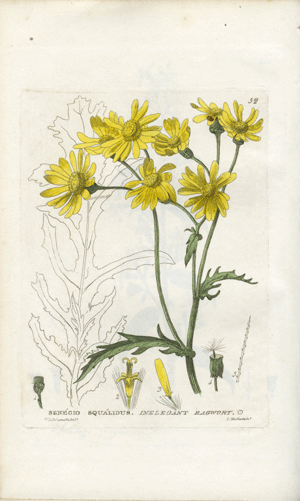 Chapters include Root – origins; Stem – collections; Leaf – collectors and collecting; Bud – naming and classifying; Flower – experimental botany; Fruit – applied botany; and Seed – teaching.
Chapters include Root – origins; Stem – collections; Leaf – collectors and collecting; Bud – naming and classifying; Flower – experimental botany; Fruit – applied botany; and Seed – teaching.
There is so much to explore in this book and it deserves to be on every gardening bookshelf. It will be an invaluable resource for students and those interested in botany and for the interested gardener an invaluable background into our botanic history.(pictured right: Oxford ragwort (Senecio squalidus), a species which spread across the UK from Oxford Botanic Garden, depicted by William Baxter in his British Phaenogamous Botany (1834). Sherardian Library Plant Taxonomy, University of Oxford.)
The author’s fluent writing style makes it a joy and readers will discover many fascinating details into the origin of many of our well known plants. The Oxford Botanic Garden (the UK’s oldest), certainly occupies a unique place in both history and academic location, as the birthplace of botanical science in the UK and this book is a valuable record of that history.
‘Roots to Seeds – 400 years of Oxford Botany‘ by Stephen A. Harris is printed in hardback by the Bodleian Library Publishing at £40.00.

